Homemade Cleaning Products and Fun Kid Projects to do at Home!
Hi Friends! I hope you are all healthy, safe and getting creative on how to take care of your family from home! In many parts of the country we are being asked to work from home and are all practicing social distancing!! With both spouses and kiddos in one space for extended periods of time, togetherness and creativity takes on a whole new level.
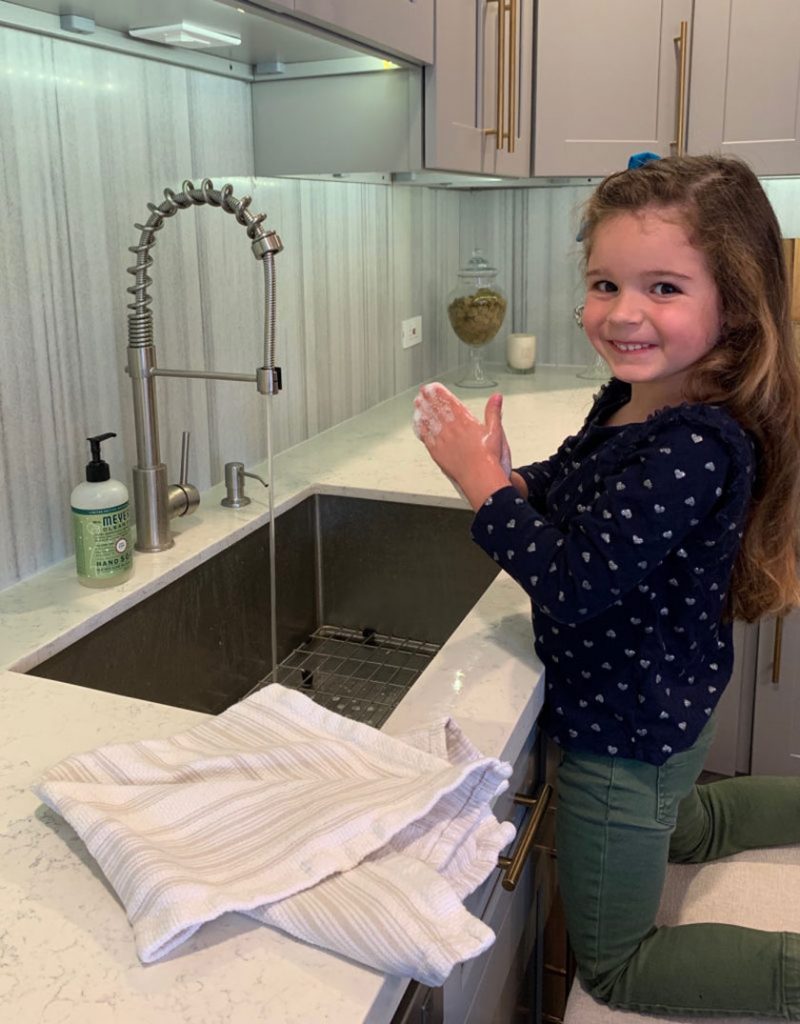
This little one certainly has a new appreciation of hand washing and hand sanitizers! Three months ago only 5% of us washed our hands for 20 seconds, the time needed to really kill germs! We were not aware that on average we come into contact with 300 surfaces every 30 minutes, exposing us to 840,000 germs every half hour, or that elevator buttons harbor 22% more bacteria than potty seats. EEK!! We are raising a new generation of hand washers who will really understand what hand washing hygiene and staying safe means!
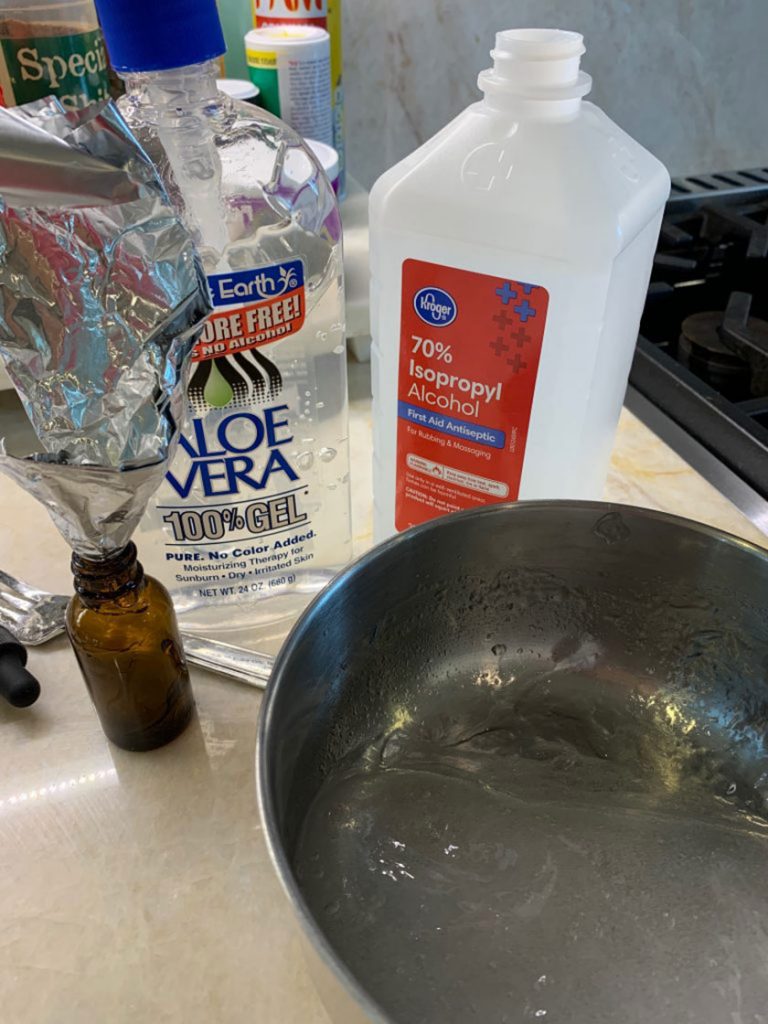
With hand sanitizer in short supply, a designer I work with in California shared her recipe which she has been making from home. The two main ingredients you’ll need are aloe vera and isopropyl alcohol. Finding the necessary supplies was a journey itself. My Segreto staff pulled together, contributing the ingredients to make batches for us all. The recipe is one part aloe to three pars of 95% to 99% isopropyl alcohol. Adding essential oil will soften the smell and the effect on your skin. Make sure you use a clean bottle that can be sealed. We used 70% alcohol, fingers crossed that works. The experts say that’s its okay to use potent booze of 95% alcohol by volume or more.
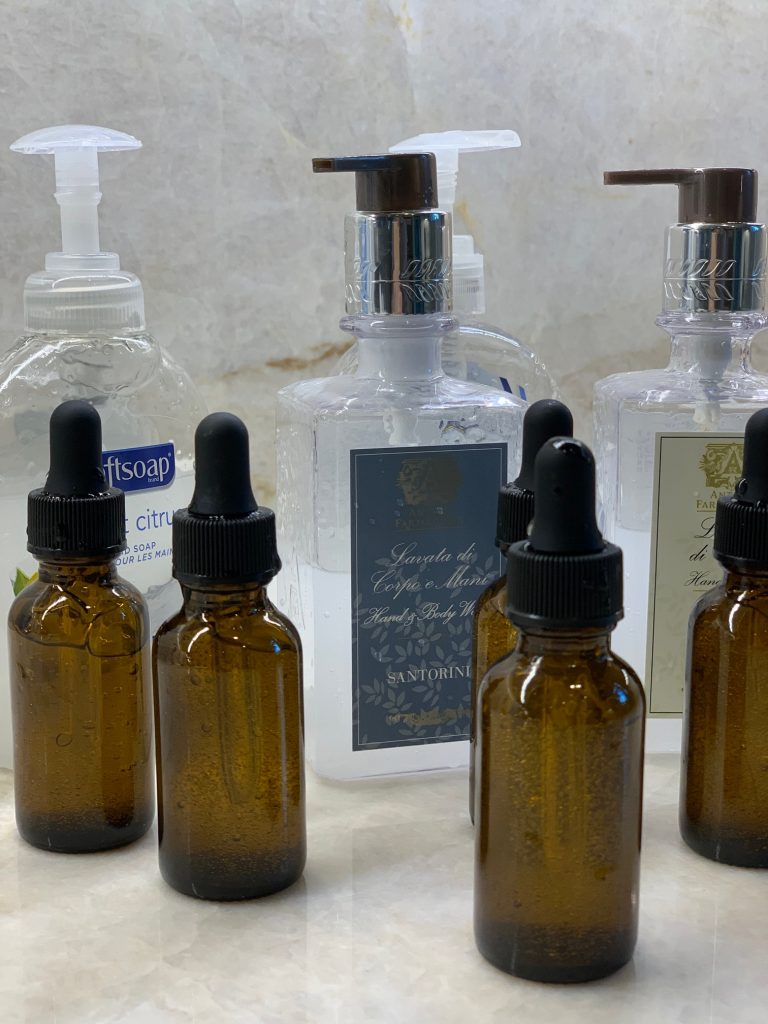
Using any bottle I could find and clean, the challenging part was filling the containers. I tried to make a funnel from foil, but it worked best filling a baggie and clipping the corner. than giving it a squeeze!

Scanning the internet The Soccer Mom Blog has a great article filled with different products you can use to clean. It’s important to note that these items are for emergencies only. If you have soap and water available, that is always the best option. But, in a pinch, from vinegar, to hydrogen peroxide, to Everclear, she shares how these household products can help you clean and stay safe at home! Thanks Stacey!!!!!!!!!!!
I also found recipes to make your own cleaning disinfectant by diluting household bleach. What I didn’t know is you should still clean the surfaces first with soap and water before you disinfect. Good to know!!
- Diluting your household bleach.
To make a bleach solution, mix:- 5 tablespoons (1/3rd cup) bleach per gallon of water
OR - 4 teaspoons bleach per quart of water
- 5 tablespoons (1/3rd cup) bleach per gallon of water
Follow manufacturer’s instructions for application and proper ventilation. Check to ensure the product is not past its expiration date. Never mix household bleach with ammonia or any other cleanser. Unexpired household bleach will be effective against coronaviruses when properly diluted.
Create the total experience at home!
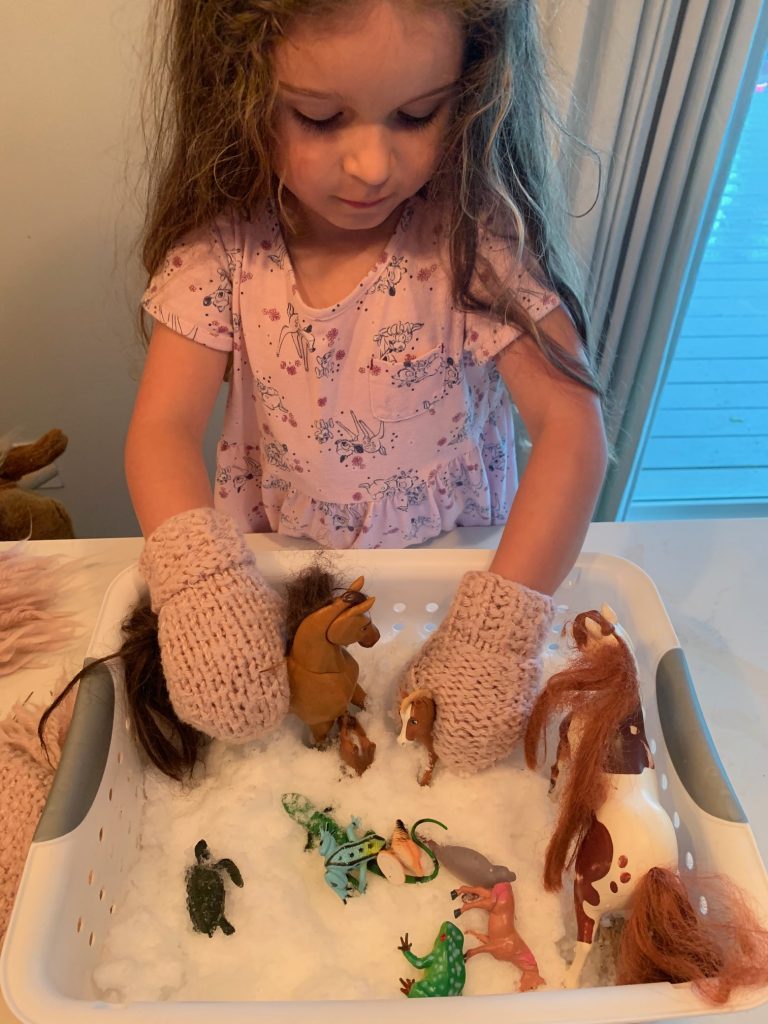
Keeping little ones entertained while sequestered at home can be a challenge for any parent! This little ones mom created a snow day for all of her critters at home! Creating the true burrrrrrrrrrrrrrrrrrrrrrrrrr experience, This snow is made from blended ice.
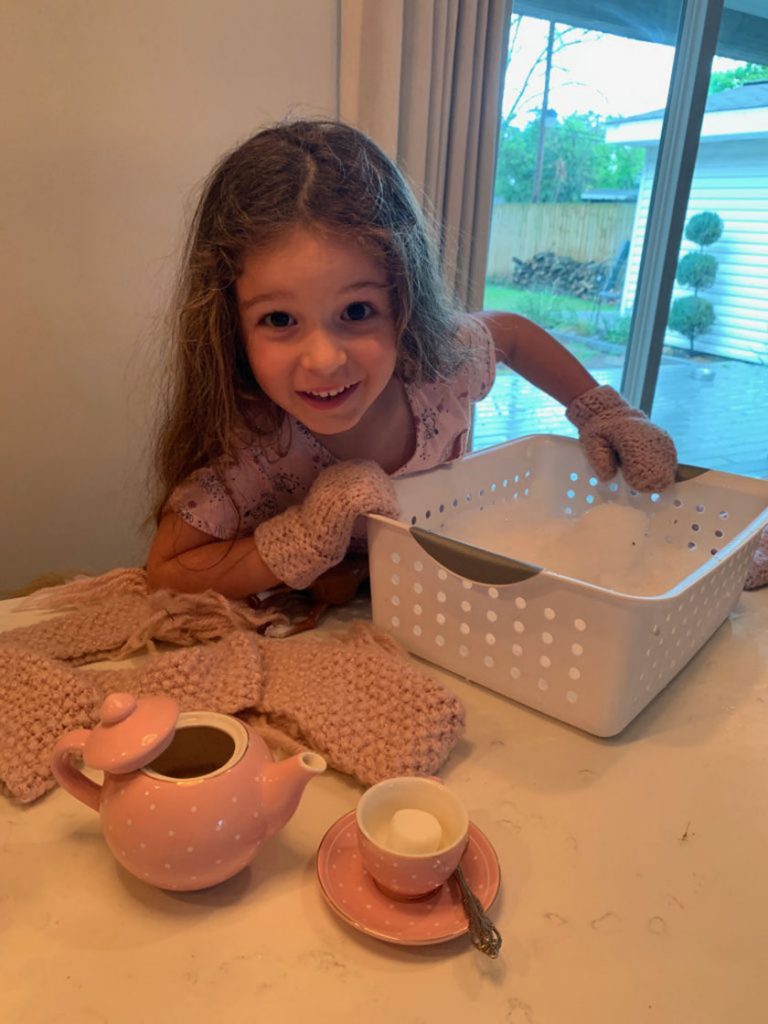
To create learning and a fun time, with an activity which will span hours, not minutes, think about forming the total experience. Pull out their gloves and mittens and serve hot chocolate, everything you would normally do if the flurries were full force outside. Have your little ones make the snow with you! Find a book to read to them that has snow as a part of the story and have them draw pictures or write and illustrate their own story about their fun snow day at home!
There are also lots of recipes online for making snow from baking soda, shaving cream, and hair conditioners. All you need is:
- 1/2 cup of hair conditioner
- 3 cups of baking soda
If you want to make more snow, just use a 1 to 6 ratio of conditioner to baking soda.
Mix your ingredients together, add some glitter if desired, and get snowy! You’ll have your very own winter wonderland in no time at all. Super fun!! Make both kinds! With a full day of activities, you have combined science, art and English all in one super fun adventure day at home.
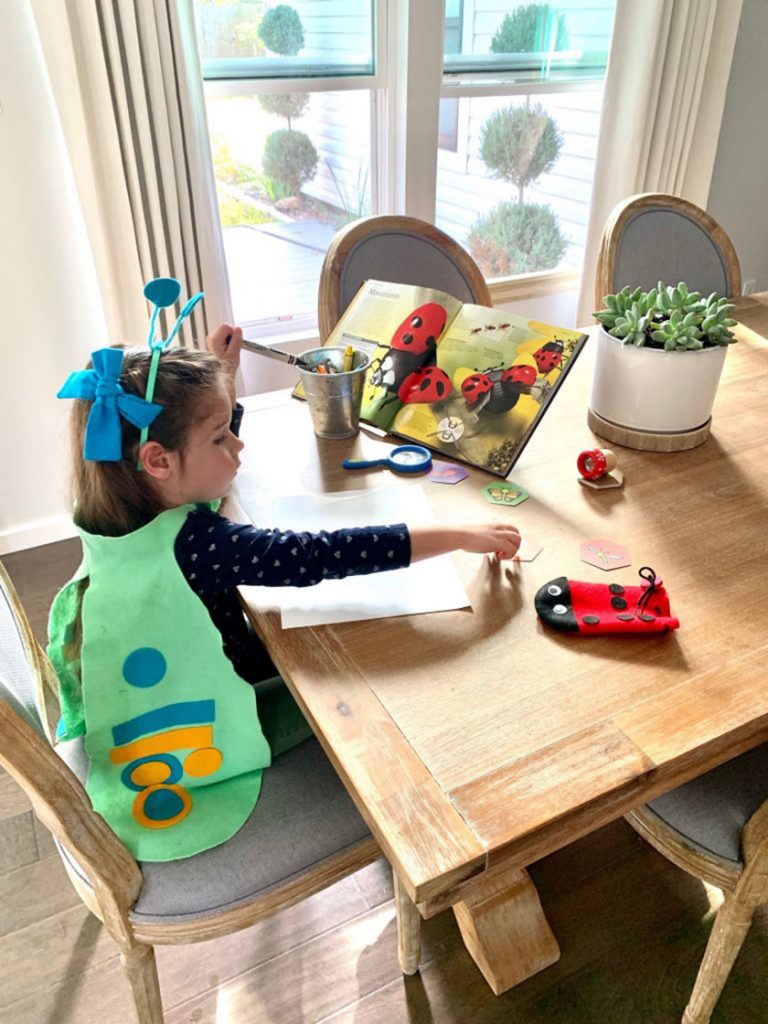
Who doesn’t love the Ladybug!! They are welcomed in people’s homes and considered good luck. “According to legend, European crops during the Middle Ages were plagued by pests. Farmers began praying to the Blessed Lady, the Virgin Mary. Soon, the farmers started seeing beneficial ladybugs in their fields, and the crops were miraculously saved from the pests. The farmers began calling the red and black beetles “our lady’s birds” or “lady beetles”. The Seven-Spotted Lady Beetle is believed to be the first one named for the Virgin Mary; the red color is said to represent her cloak and the black spots her seven sorrows.”- ThoughtCo.
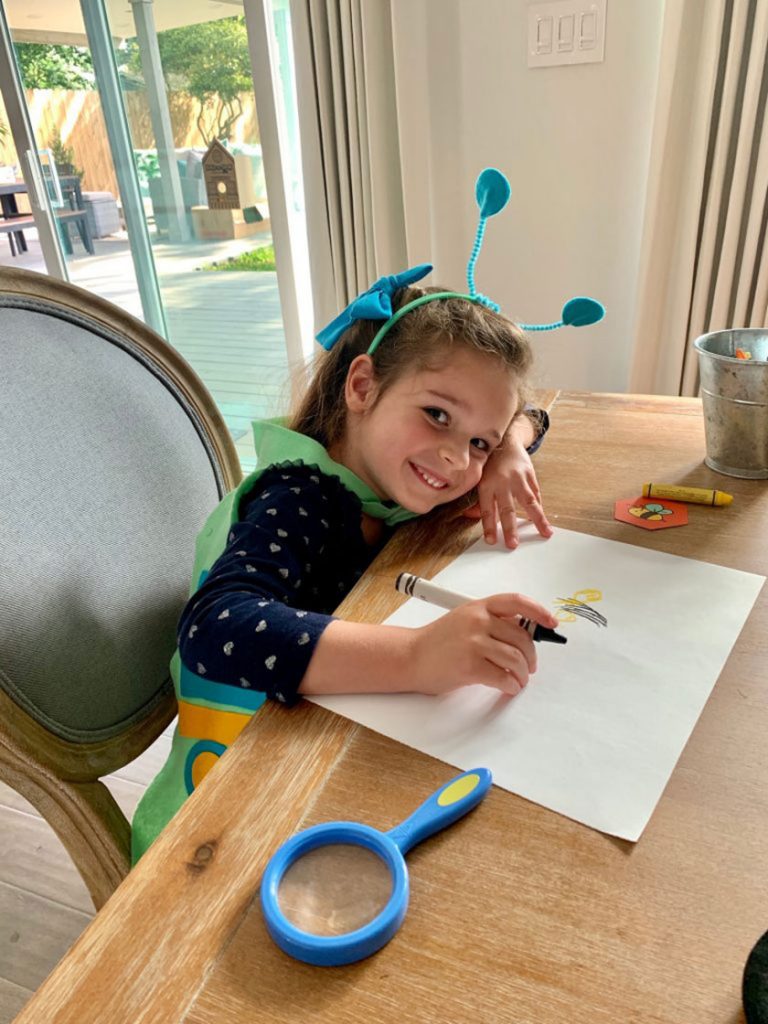
Starting with The Bugliest Bug, a cute book with a lovely message, a multiday scientific adventure began into bug land. At the bottom I have the information fact sheet. ThoughtCo. is also a great place to learn all you need to know about the little bug. Her journey by drawing different bugs, comparing and contrasting their similarities and differences. How many legs do centipedes have vs spiders, etc!
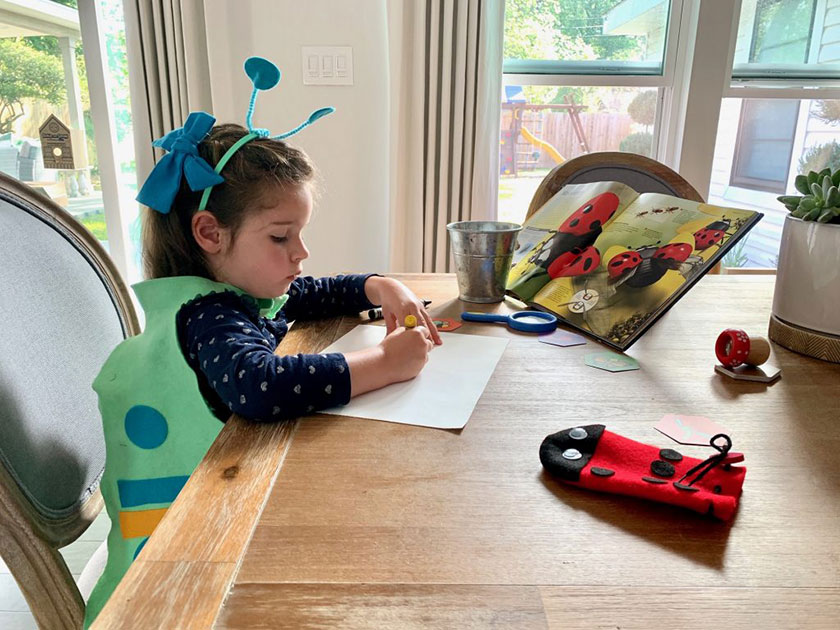
Using costumes and bug hand puppets they made together, it is fun to learn why they are brightly colored, their life cycle, and so much more. If you don’t have these supplies, use paper for you costumes and puppets. or pick up rocks outside, while looking for bugs, and then paint them when you come in.
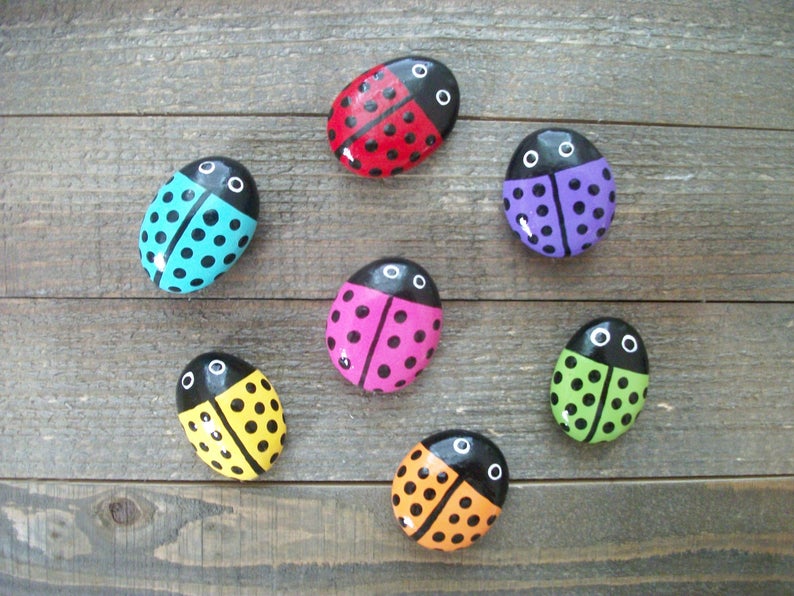
Picking up rocks outside while looking for bugs and painting them to look like little critters would be a super fun craft. Or give you little ones some inspirations by these beauties already painted by TLChandcrafted on Etsy!
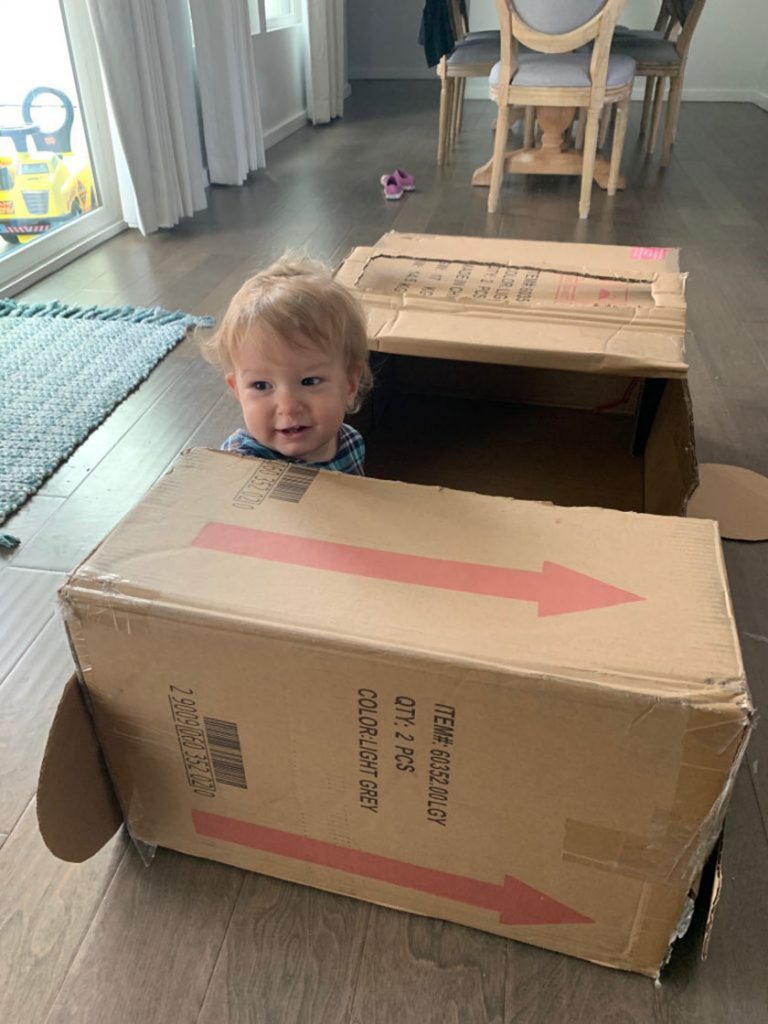
1-year-old’s can stay super busy by using boxes she had on hand to make boxcars for him to play in! Multi-tasking in one of Mom’s greatest strengths!
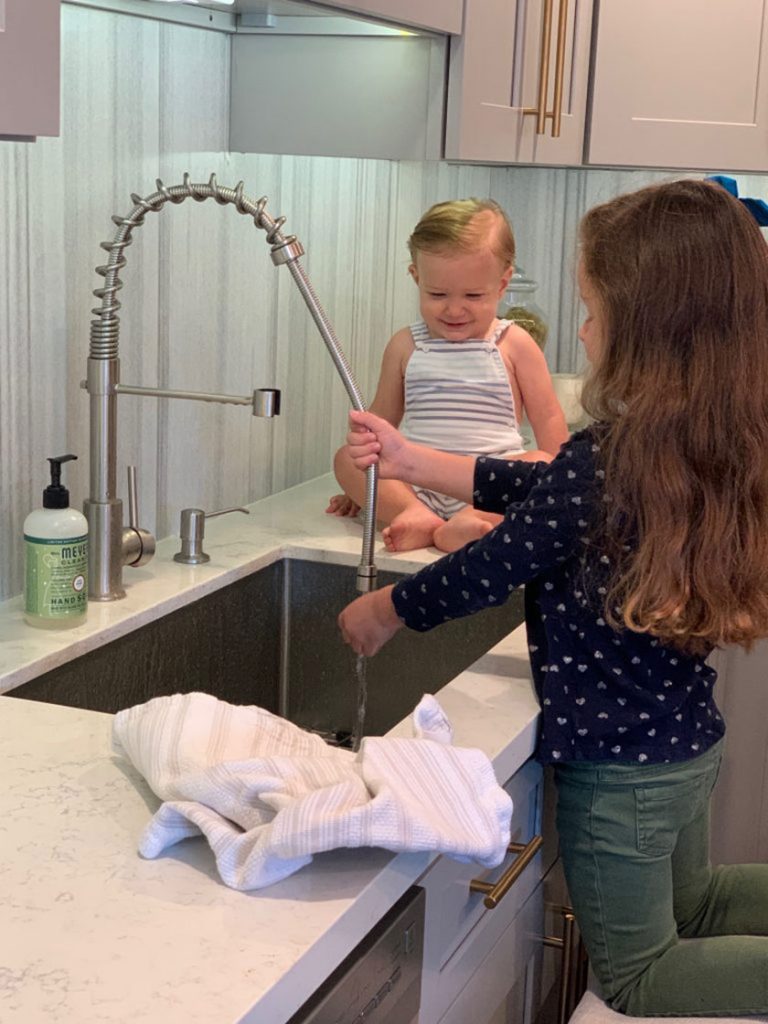
Engaging siblings to work together is a wonderful way to teach responsibility while having fun!! Big sis is teaching her real life baby to wash his hands and his cute little toes!
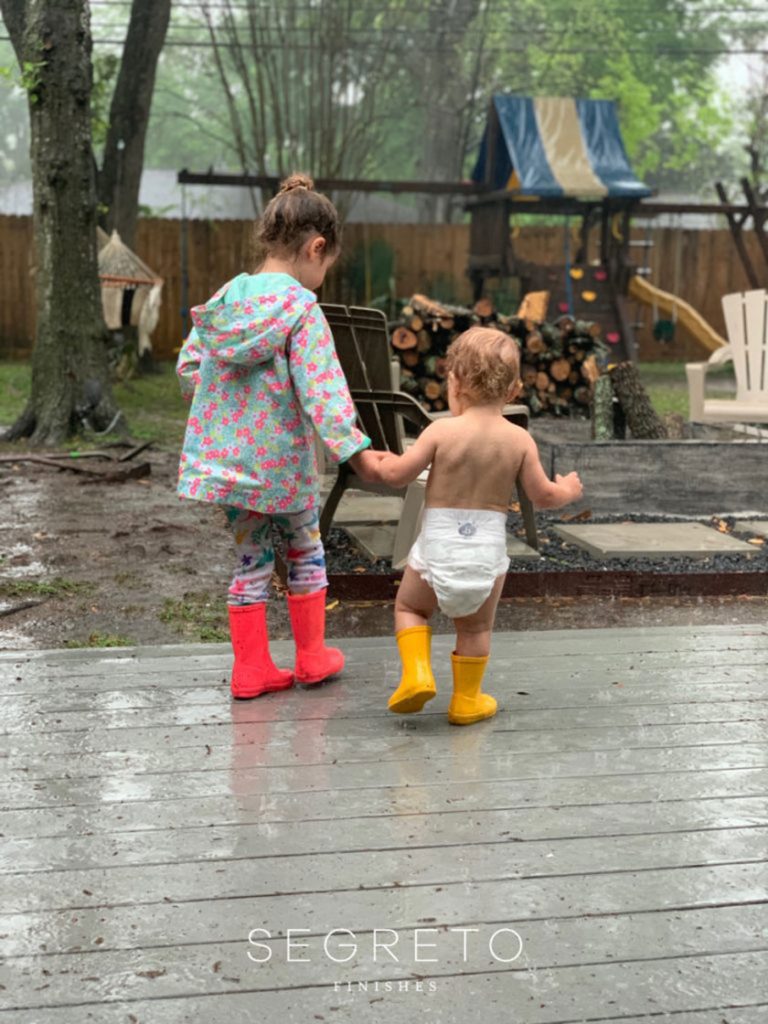
Thanks to this sweet family who are part of our Segreto family, for sharing how they are keeping upbeat and busy while staying home!! Share with all of us, on how you are being creative in doing your part to help stop the spread of this epidemic. Leslie@segretofinishes.com.

Super exciting news! Limb Design who helped me with the graphic design of Segreto Impressions entered it into the AAF Houston American Advertising Awards competion. Segreto Impressions won Gold for book design and Best in Show for print! Wow! Thank to each and everyone of you for your support and your projects. For a limited time you can save big on The Segreto Book series making it affordable to gain design inspiration while you are practicing social distancing at home! Order here.
Much love, stay safe and looking forward to our time together next week! xo Leslie
What are ladybugs?
Ladybugs are insects in the Coccinellidae family of the beetle order, Coleoptera. They are characterized by their oval‐shaped body and distinctive coloring.
Is there a difference between lady beetles and ladybugs?
Although these insects are commonly called “ladybugs,” they are members of the beetle order, Coleoptera. The Coleoptera are unique from other orders in that they undergo complete metamorphosis (that is, have larva and pupa stages in their life cycle), and their forewings have modified into a hardened cover (elytra) that protects the insect. “True” bugs belong to the order Hemiptera, and include boxelder bugs, plant bugs, and squash bugs.
Immature True Bug
Though taxonomically incorrect, lady beetles are still commonly referred to as ladybugs. Other frequently used common names are ladybirds or ladybird beetles.
How did ladybugs get their name?
The most common legend as to how ladybugs got their name is that during the middle ages in Europe, swarms of aphids were destroying crops. The farmers prayed to the Virgin Mary for help – and help came in the form of ladybugs that devoured the plant‐destroying pests and saved the crops! The grateful farmers named these insects “Our Lady’s beetles,” a name which has endured to present day.
What do ladybugs eat?
Both adult and larval ladybugs are known primarily as predators of aphids but they also prey on many other soft‐bodied insects and insect eggs. Many of these are agricultural pests, such as scale insects, mealybugs, spider mites and eggs of the Colorado Potato Beetle and European Corn Borer. A few ladybugs feed on plant and pollen mildews and many ladybugs supplement their meat diet with pollen.
What eats ladybugs?
Ladybugs are not commonly eaten by birds or other vertebrates, who avoid them because they
exude a distasteful fluid and commonly play dead to avoid being preyed upon. However,
several insects, such as assassin bugs and stink bugs, as well as spiders and toads may
commonly kill lady beetles.
How many different species are there in the US? In the world?
There have been over 500 species of ladybugs identified in the United States, and over 4500 in
the entire world.
How long do they live?
After a female lays her eggs, they will hatch in between three and ten days, depending on
ambient temperature. The larva will live and grow for about a month before it enters the pupal
stage, which lasts about 15 days. After the pupal stage, the adult ladybug will live up to one
year.
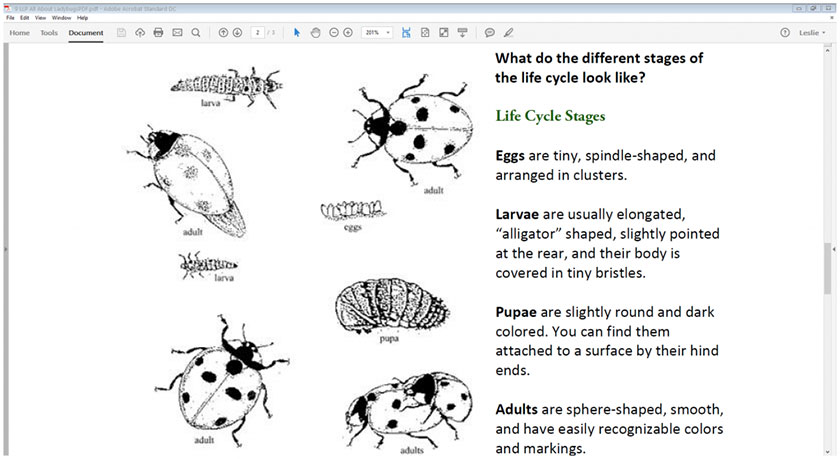
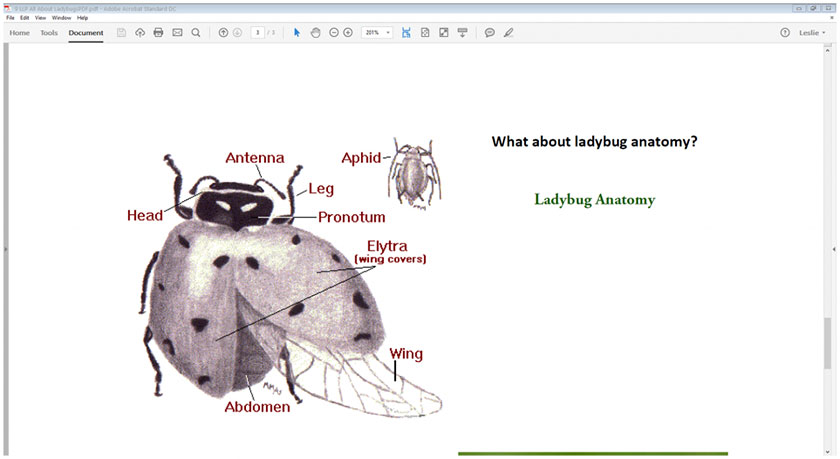
Why are they so brightly colored?
Ladybugs’ bright colors serve as a warning – they indicate any potential predators of the distasteful repellents the beetle will release if attacked. Ladybug spots are part of the bright warning pattern discussed in the previous question.
What’s with them in my house during winter?
During the winter months, ladybugs seek out a warm place to hibernate. Many seek out cracks around buildings, including people’s homes. They mass together to stay warm throughout the winter. Don’t worry, they will not harm you or any part of your home, and they will be gone by spring.
How did non‐native species get here?
Non‐native ladybug species may have been introduced to the United States by scientists as an attempt to control crop‐damaging aphids, or they could have hitched a ride with any vegetation that was brought over from Europe, Africa, or Asia.


No Comments